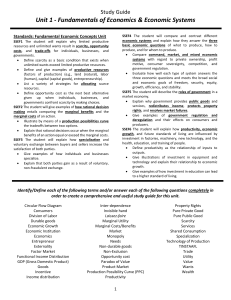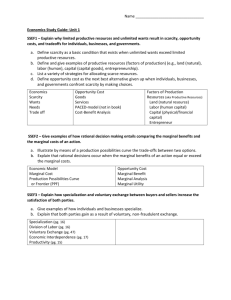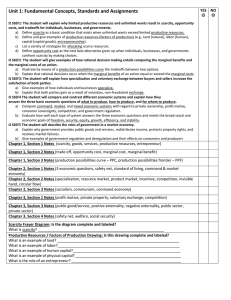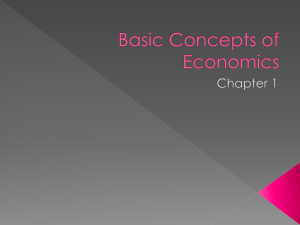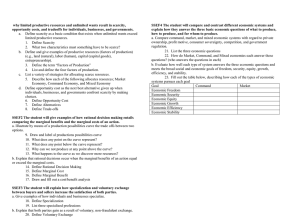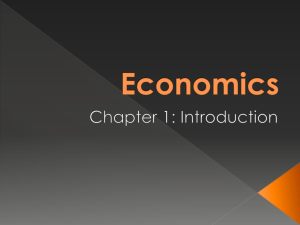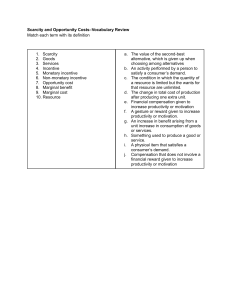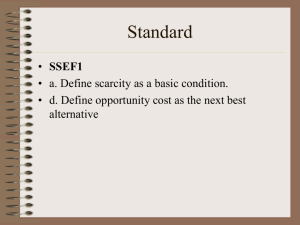Unit I
advertisement
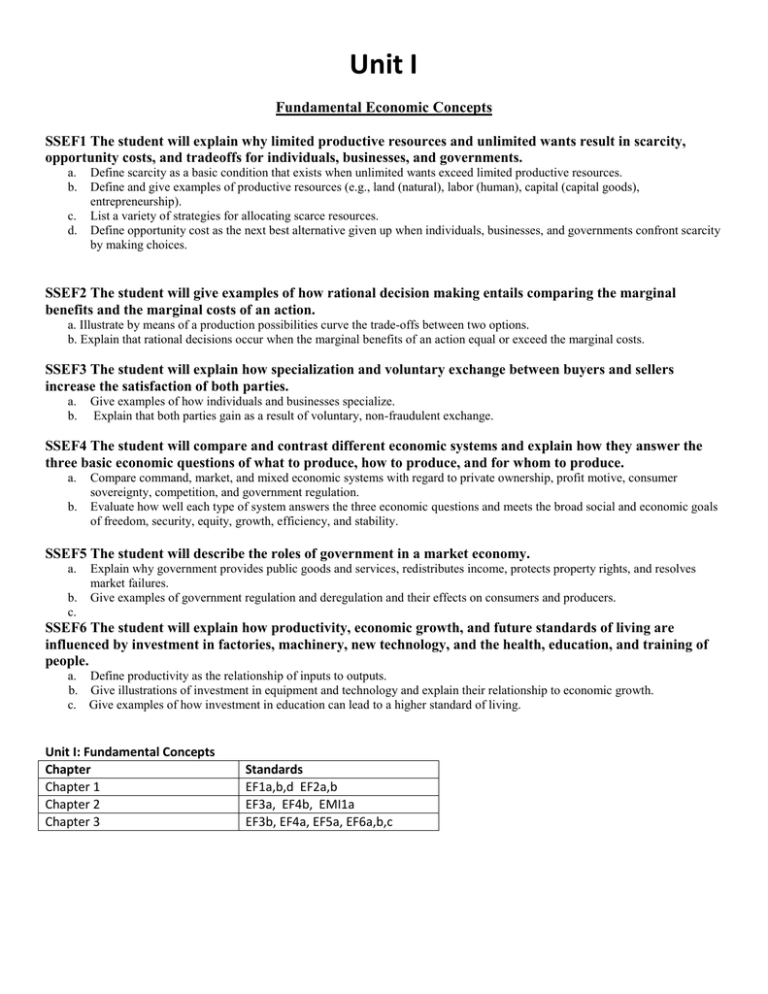
Unit I Fundamental Economic Concepts SSEF1 The student will explain why limited productive resources and unlimited wants result in scarcity, opportunity costs, and tradeoffs for individuals, businesses, and governments. a. b. c. d. Define scarcity as a basic condition that exists when unlimited wants exceed limited productive resources. Define and give examples of productive resources (e.g., land (natural), labor (human), capital (capital goods), entrepreneurship). List a variety of strategies for allocating scarce resources. Define opportunity cost as the next best alternative given up when individuals, businesses, and governments confront scarcity by making choices. SSEF2 The student will give examples of how rational decision making entails comparing the marginal benefits and the marginal costs of an action. a. Illustrate by means of a production possibilities curve the trade-offs between two options. b. Explain that rational decisions occur when the marginal benefits of an action equal or exceed the marginal costs. SSEF3 The student will explain how specialization and voluntary exchange between buyers and sellers increase the satisfaction of both parties. a. b. Give examples of how individuals and businesses specialize. Explain that both parties gain as a result of voluntary, non-fraudulent exchange. SSEF4 The student will compare and contrast different economic systems and explain how they answer the three basic economic questions of what to produce, how to produce, and for whom to produce. a. b. Compare command, market, and mixed economic systems with regard to private ownership, profit motive, consumer sovereignty, competition, and government regulation. Evaluate how well each type of system answers the three economic questions and meets the broad social and economic goals of freedom, security, equity, growth, efficiency, and stability. SSEF5 The student will describe the roles of government in a market economy. a. b. c. Explain why government provides public goods and services, redistributes income, protects property rights, and resolves market failures. Give examples of government regulation and deregulation and their effects on consumers and producers. SSEF6 The student will explain how productivity, economic growth, and future standards of living are influenced by investment in factories, machinery, new technology, and the health, education, and training of people. a. Define productivity as the relationship of inputs to outputs. b. Give illustrations of investment in equipment and technology and explain their relationship to economic growth. c. Give examples of how investment in education can lead to a higher standard of living. Unit I: Fundamental Concepts Chapter Chapter 1 Chapter 2 Chapter 3 Standards EF1a,b,d EF2a,b EF3a, EF4b, EMI1a EF3b, EF4a, EF5a, EF6a,b,c Standards Update Sheet Name:________________________________Class:_______________Instructor:___________________ + mastery Standard SSEF1a SSEF1b SSEF1c SSEF1d SSEF2a SSEF2b SSEF3a SSEF3b SSEF4a SSEF4b SSEF5a SSEF5b SSEF5c SSEF6a SSEF6b SSEF6c - needs improvement Activity Activity Activity Activity Activity Activity Activity Activity Activity
